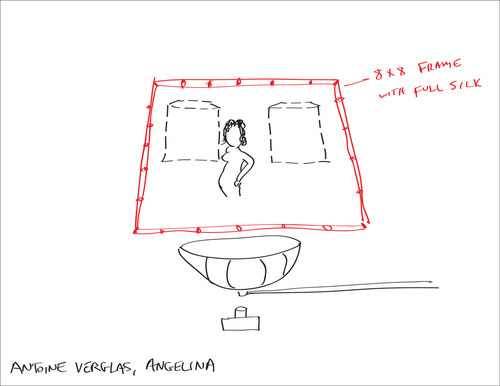The photographer Ted Sabarese tries on his blog to guess the lighting setup used for professional photos, and sketches them accordingly.
Monthly Archives: December 2011
Readings on physically based rendering
Physically based rendering (PBR) seems to be the hot thing recently in game as well as film industries. Last year at SIGGRAPH Naty Hoffman led a course on physically based shading. The first talk in particular gives some excellent insights on the physics behind lighting.
This year, at SIGGRAPH again, the physically based lighting used in Call of Duty: Black Ops was one of the topics of the course Advances in Real-Time Rendering in 3D Graphics and Games. Keith Judge wrote an article to sum up the ideas presented in this talk in shading language. Sébastien Largarde also has some insights on the shift to physically based shading from a production point of view.
On a narrower topic Rory Driscoll briefly explained the problem of energy conservation, a first but important step toward PBR, in a convincing and straight to the point manner. In articles mentioning normalization factors the origin is not always clear, especially when authors take shortcuts to avoid digressing from their topic. Fortunately Fabian Giesen wrote a demonstration of the normalization factor for the Phong and Blinn-Phong models and Christian Schüler gathered various of the normalization terms we can see in publications, with proper references.
There are many other sources to read, but I will stop there for now. Just follow the links and you have plenty of reading already. ;)
Addendum: Sébastien pointed out this article on energy conservation for wrapped diffuse lighting and this one on physically plausible microfacet BRDF, which includes a WebGL demo to play with.
Update: Tri-Ace has made a couple of presentations on the matter over the last years, which you can find on their research page.
Update: this article, Basic Theory of Physically-Based Rendering, presents the ideas of PBR in a very easy to read manner and works well as an introduction.
Visualizing specular component in real life
Graphics programmers are quite used to the idea of specular highlight. It is usually more or less understood, or accepted, to be the reflected part of the incoming light, on top of the one that sort of bounces in every direction and that is referred to as the diffuse part. The specular term happens to have a very physical meaning though (which I won’t elaborate on for this time) and the interesting property of being polarized while the diffuse part is not.
This property is used by photographers, who add polarizing filters to their gear in order to eliminate glares and reflections from their shots when taking photos through glass or water for instance.
John Hable has written a very interesting article showing how to split specular and diffuse in real images. He later wrote another article showing that specular often contributes more than we expect for matte materials. Both help giving an idea of the importance of the specular term as well as getting the eye trained to identify it.
Architecture mapping on the Sheikh Zayed Grand Mosque
Obscura Digital showed this beautiful architecture mapping on the Sheikh Zayed Grand Mosque during the UAE National Day (December 2nd) this year.
In celebration of UAE National Day 2011
Projection and design by Obscura Digital44 projectors with a combined brightness of 840,000 lumens were used to cover a surface 600ft wide x 351ft high
Live coding and apples
There is a recent trend of coding with an overlay editor on top of the live result, changing as the code gets written and modified. I suspect it originates on one hand from the work of the folks at Sexy Visuals and some of the videos Iñigo Quilez has been publishing demonstrating some concepts, including a basic raytracer in less than half an hour. And on the other hand, on Shader Toy (made by the same usual suspect), a web page using WebGL to allow fast GLSL shader prototyping in a browser.
It was only a question of time before someone would merge both concepts. Thus Ricardo Cabello (often known as Mr Doob) sparked off a lot of effervescence when he published his GLSL Sandbox. People would try many things, give feedback and advices, someone would quickly come up with a gallery… But after various toy experiments by various people, IQ would come back and make waves with his procedural apple. He also published another live coding video, showing how it was made.
Opening sequence of Vakondok 2 / Moleman 2
The Hungarian producer and director Matusik Szilárd published the final version of the opening of the documentary about the demoscene he and his team made: Vakondok 2, aka. Moleman 2. The whole film, which is about 90mn long, premiered in November in Budapest and will likely be screened in various places around the World in 2012.
The sequence is a mix of many classics of the demoscene, from early days to recent years. How many productions are you able to identify?
Here is the trailer of the film:
A trip through the Graphics Pipeline
Fabian Giesen, known as ryg, wrote during Summer a comprehensive series of articles diving into the graphics pipeline. The read is dense and provides lots of details on what is (likely) happening under the hood, that will prove very useful to graphics programmers.


